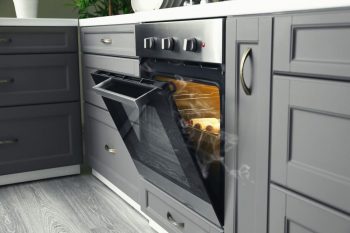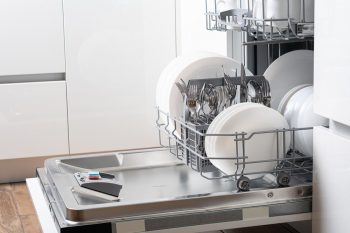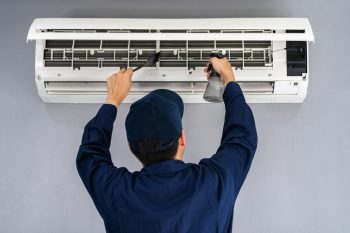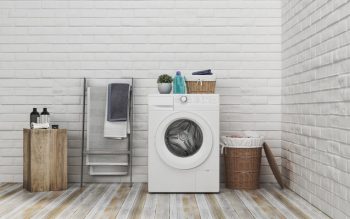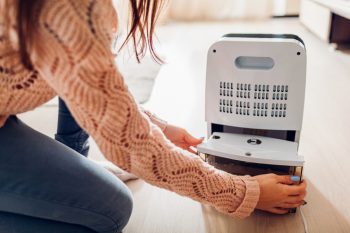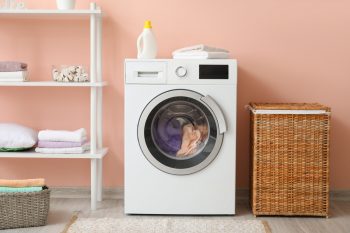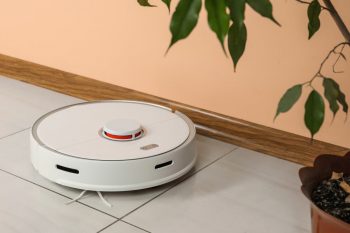
Robot vacuums are common smart home devices in the market.
They have become increasingly popular due to their cleaning convenience, allowing you to go about your day without thinking about dirty floors and carpets. However, one of the most common questions asked before getting a robot vacuum is if they fall down the stairs.
Smart vacuums are expensive, and damage to the device means spending more money on costly repairs. The little cleaners are not too good at navigating staircases, and your Roomba might end up destroyed without proper care.
Though they do not typically tumble down the staircase, this article will examine why the cleaner has this issue.
These are some of the most common reasons why your robot vacuum cleaner is falling down the stairs:
- Defective cliff sensors.
- Poor navigation.
- Faulty wheel motors.
- Steep ramp slope.
- Low battery charge.
Are you having trouble with your robot cleaner? Then, stick around to learn more about tips to improve your vacuum’s efficiency and performance.
Reasons Why Your Robot Vacuum Is Falling Down the Stairs
If you wonder if your vacuum can fall down the stairs, the answer is yes and no. Several factors determine your vacuum’s efficiency at navigating the stairs, from the device’s inbuilt technology to dirty sensors.
Let us look at some of the reasons for the issue and how to prevent it from happening.
1. Defective Cliff Sensors

A smart vacuum might fall down the stairs if it has defective or clogged cliff sensors. So cliff sensors are an essential feature added to new robot vacuum models to help them navigate steep slopes.
The sensors detect a near-drop slope and turn the unit around to keep it on the ground safely. However, older vacuum models were not designed with cliff sensors, making it impossible to detect the staircase slope.
Additionally, if the cliff sensor in your vacuum is defective, the cleaner might have issues mapping the slopes around the house.
Fixing Defective Cliff Sensors
On the bright side, if your smart vacuum has faulty cliff sensors, replacing them can ensure the appliance is working efficiently again.
Here are some easy steps to follow when making the repairs:
- Before starting the DIY repairs, you should inspect the sensors for any sign of damage.
- Check the user manual for any specific instructions on replacing the cliff sensors.
- Turn off the robot vacuum.
- Remove the bottom cover of the vacuum to access the sensors.
- Identify and remove the faulty cliff sensors.
- Install new sensors.
- Test and recalibrate the sensors.
- Reassemble the vacuum.
If you replace cliff sensors or other parts in your robot vacuum, you should always get original equipment manufacturer (OEM) parts. This ensures better compatibility and improves performance.
If you have an older appliance model that does not have cliff sensors, you might need to upgrade to another cleaner with this feature.
2. Poor Navigation
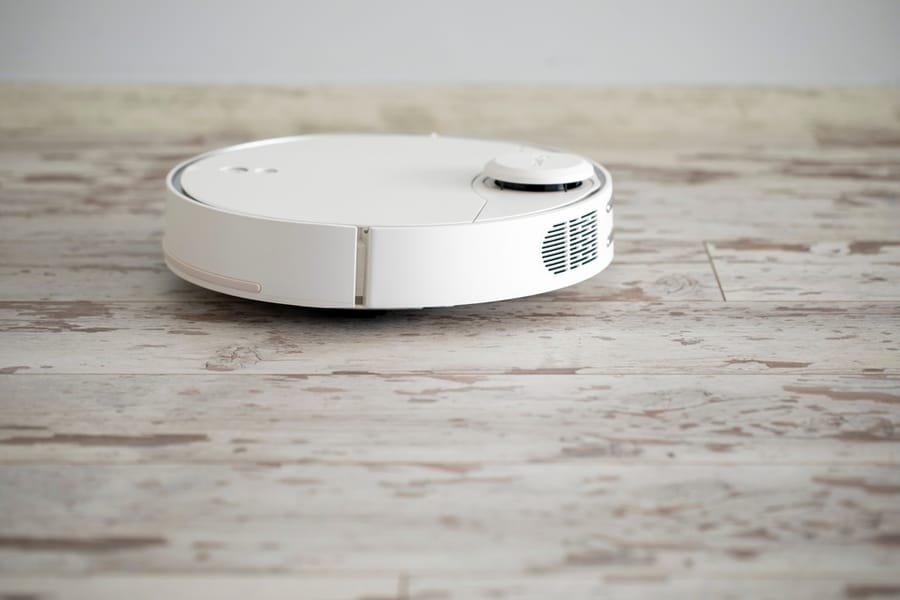
Secondly, poor navigation can cause your vacuum cleaner to fall down the stairs. Smart vacuums have other sensors like infrared, acoustic, and laser sensors and cameras that help them detect objects and navigate around them.
However, if the device has dirty or defective sensors, it can lead to poor navigation. Without proper navigation, your cleaner might fall down the stairs and get stuck behind obstacles.
Fixing Navigation Issues in Your Robot Vacuum
Regular cleaning of the Shark’s sensors can help improve its navigation. You can follow these simple steps to prevent dirt and debris from interfering with your device’s sensors and camera:
- First, turn off the vacuum cleaner.
- Locate the camera and sensors on the device. The laser and camera are found on the top or bumper of the cleaner, while the sensors are found at the bottom or bumper of the unit.
- You should use a dry cotton swab to clean the sensors.
- To clean the camera and laser, use a dry microfiber cloth to remove dust and dirt.
Cleaning the camera and sensors using a damp cloth or fluid can damage the parts.
However, if you have defective sensors or cameras, they must be replaced as soon as possible. The same procedure to replace the cliff sensors also applies to other sensors in your unit. However, before starting the repairs, identify and replace the faulty sensor with a compatible one.
3. Faulty Wheel Motors

Also, malfunctioning wheels can cause your vacuum cleaner to have issues falling down the staircase. This is because wheels are essential to the device’s navigation system during cleaning.
However, defective wheel motors can impair the cleaner’s ability to navigate the house. For example, if the motor cannot respond in time, it can prevent the cleaner from slowing down or stopping near the edge of the staircase.
Likewise, clogged motors can affect how efficiently the appliance navigates.
Fixing Clogged or Damaged Wheel Motors
Cleaning wheel motors should get your iRobot working efficiently again. On the other hand, a faulty motor should be replaced.
Here are a few simple steps to follow when making the repairs:
- Turn off the robot vacuum cleaner.
- Flip the robot cleaner and locate the clogged or defective wheel motor.
- Remove the bottom covers for easier access to the motor.
- If you notice any dirt stuck on the wheel axle, use your hands or a brush to remove it gently.
- You must disconnect the wire connectors to the unit to clean or replace the motor.
- You can also take out the motor and gently clean it with a dry brush or cloth to remove the dirt.
- However, faulty motors should be replaced.
- Reattach the motor to the vacuum cleaner.
- Test if the motor is working efficiently.
- Reinstall the back cover of the device.
4. Steep Ramp Slope

Likewise, the slope of your ramp can determine if your vacuum cleaner tumbles to the bottom of the staircase.
With proper mapping and navigation, your iRobot can do an excellent job cleaning your house’s lower and upper floors with the help of a vacuum ramp.
However, you might encounter a problem if your ramp is too steep. The cliff sensors prevent the cleaner from going off the edge, but the feature does not apply when going up or down ramps. Steep ramps can cause the cleaner to fall.
Building the Right Robot Vacuum Ramp
Before building a ramp for your robot vacuum, there are two things that you need to take into consideration.
- The maximum slope angle of a ramp: The first thing you need to consider is the angle of arrival and departure when the cleaner is using the ramp. Its angle must be ideal to allow the device to get on and off the ramp without any issues.
- Ground clearance for the robot cleaner: You want the ramp to be low enough that the cleaner can get on without hitting the ramp surface.
5. Low Battery Charge
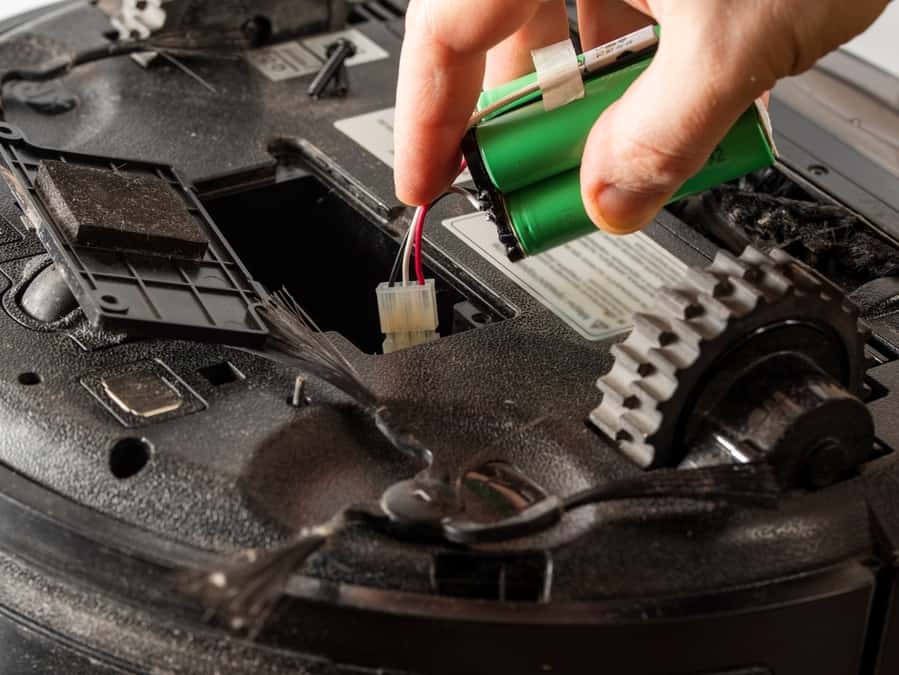
A low battery charge can cause a few hiccups with your vacuum cleaner. Lack of enough power can interfere with the cleaner’s navigation system, causing it to get stuck on obstacles and fall down the stairs.
First, a low charge can reduce the speed and power of the cleaner, making it hard to avoid obstacles and clean efficiently.
Furthermore, sensors rely on the battery charge to detect ledges and drops. Without enough power, there is an increased risk of improper readings that might result in the cleaner falling down the stairs.
Fixing a Battery Issue With Your Robot Vacuum
If you only have to deal with a low battery charge, putting that vacuum back on its charging dock should resolve the issue. On the other hand, a defective battery should be replaced.
Follow these simple steps to replace the battery pack in your smart vacuum:
- First, turn off the vacuum cleaner.
- Next, remove the cleaner’s bottom cover.
- Next, locate the battery and remove it by pressing the release tab.
- To install the new battery, align the battery channels with those on the cleaner, and click the battery in place.
- Replace the bottom cover.
- Place the device on the charging dock, and let it sit there until it is fully charged.
Conclusion
Robot vacuum cleaners are convenient devices to have around the house. However, if your cleaner keeps falling down the stairs, it might be an issue with its cliff sensors, poor navigation, or faulty wheel motors.
Likewise, a steep ramp slope and low battery power can cause it to fall down the stairs.
Frequently Asked Questions
Where Should I Place My Robot Vacuum Cleaner?
If you are looking for a place to install your new smart vacuum, you should find an area at least four feet from other objects like furniture.
Additionally, it would be best to make a clear cleaning path without obstructions when the device operates.
How Long Do Robot Vacuums Last?
On average, a robot vacuum has a lifespan of about 2 to 5 years with proper maintenance.

